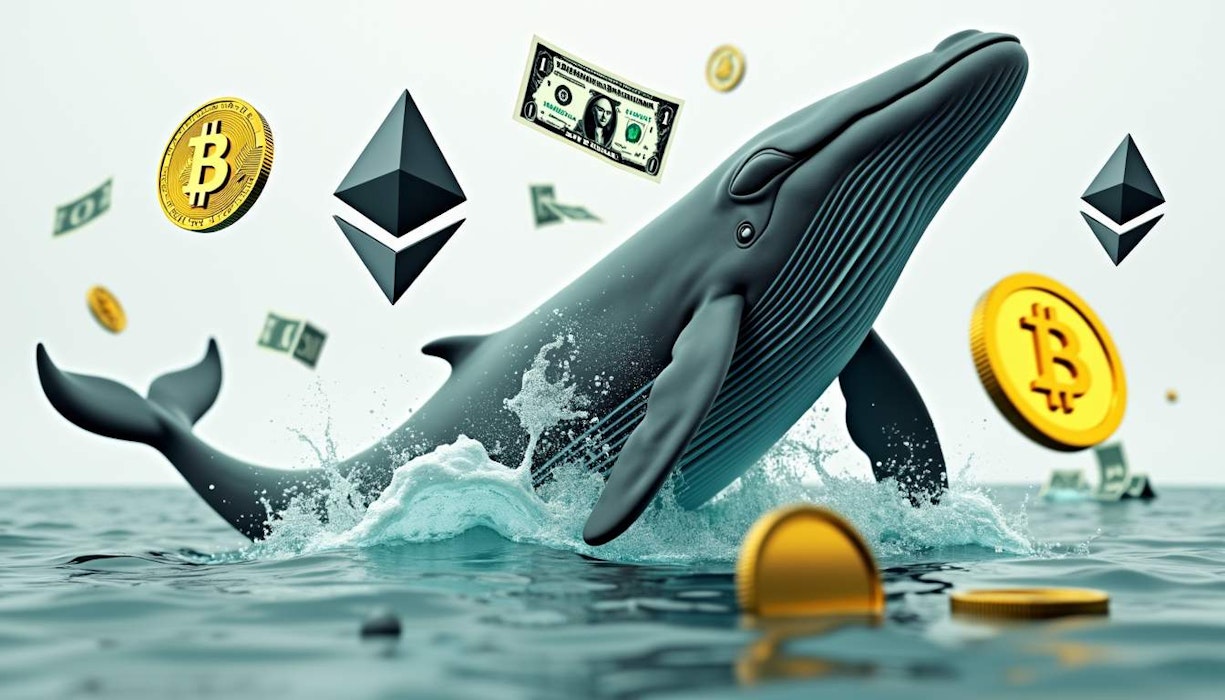What’s the current positioning of Dogecoin in the crypto marketplace?
Dogecoin, the largest meme coin in terms of market capitalization, has recently shown signs of reversing its downward trajectory. After a sharp decline over the past few days, signs of consolidation, active accumulation by whales, and a shift in market sentiment may indicate a potential turn for the better. As of now, DOGE is trading around $0.32, marking a price increase of over 2.45% in the last 24 hours. However, it’s worth noting that trading volume has plunged by 37% during this period, reflecting diminished trading activity due to market uncertainty.
What implications does whale accumulation have for Dogecoin's price?
Whale accumulation can have significant implications for the price stability of Dogecoin in both the long and short term. When whales acquire large amounts of DOGE, it can reduce the effective supply available in the market. For instance, they have bought 90 million DOGE tokens recently, which could generate upward price momentum. However, should they decide to liquidate, it can increase supply, diminish liquidity, and lead to a price spiral downwards. Whale activities can drastically impact liquidity and price volatility in various time frames.
Is Dogecoin a practical payment solution in hyperinflation-prone countries?
Considering Dogecoin as a payment option in hyperinflation-prone countries presents both pros and cons. The lower fees, faster transaction times, and decentralized nature of DOGE can bypass traditional banking infrastructure. But the currency's extreme volatility makes it unwise for businesses relying on stable prices. While stablecoins are more effective for retaining value, DOGE’s decentralized aspects and lower transaction fees may still prove advantageous in regions with high transaction costs and economic instability.
What should be the caution when predicting Dogecoin's price using short-term patterns?
Predicting Dogecoin's price using short-term patterns comes with various risks, especially in such a volatile market. Patterns can often mislead traders; false breakouts can cause financial losses. Additionally, various traders may interpret patterns differently, leading to conflicting actions. This subjective aspect can complicate technical analysis. Moreover, external factors such as influential tweets, regulatory alterations, and market sentiment can significantly shift DOGE’s price, complicating short-term predictions.
How does Dogecoin's volatility affect small businesses in Latin America?
The volatility of Dogecoin poses significant challenges for small businesses in regions prone to hyperinflation like Latin America. The unpredictable price fluctuations make DOGE less appealing as a transaction method. Businesses accepting DOGE risk receiving payments that could rapidly lose value. While the coin offers lower fees and faster transactions, its volatility raises significant hurdles. Businesses must carefully assess these factors, alongside the infrastructure and regulatory environment, before embracing DOGE as a payment method.
Which key price levels should investors track for Dogecoin’s likely breakout?
Given the current market conditions and consolidation, Dogecoin has formed a descending triangle pattern on the four-hour chart. It is poised to break out. Experts suggest that if DOGE rises above $0.327 on the same timeframe, it may increase by 11% to reach $0.36 shortly thereafter. Meanwhile, if DOGE breaks above $0.36 daily and closes above, it could surge by 30% to the $0.465 level.
How does market sentiment influence Dogecoin's price movements?
Market sentiment heavily influences Dogecoin's price, particularly when it comes to whale activities. Whale accumulation usually indicates a bullish outlook, attracting further investment and potentially pushing prices higher. Conversely, selling by these whales can create bearish conditions and decline prices. However, external variables like influential tweets, regulations, and overall market sentiment can swiftly change DOGE’s value, rendering technical predictions less reliable.
What do technical and on-chain indicators suggest for DOGE’s future?
With whales having accumulated over 2.1 billion DOGE recently, alongside the purchase of 90 million DOGE in a short span, signals are pointing towards a bearish reversal. Indicators such as the TD Sequential flashing a buy signal support this view. Increased address activity and the engagement of new users indicate growing interest. Following recent market action, if DOGE manages to break and stay above $0.36, a 30% upward movement to $0.465 seems attainable.
Will businesses adapt to the risks of Dogecoin’s volatility?
Small businesses contemplating Dogecoin as a payment method need to understand its risks and rewards. Although DOGE offers speed and lower costs, preparation for volatility is crucial. By using payment processors that can stabilize transactions to some extent, businesses can reduce risks. Regulatory and infrastructure considerations are also important. Effectively, businesses must find a way to balance the benefits against volatility risks.
In summary, Dogecoin's future is uncertain but complex. Whale accumulation suggests potential upside, but the inherent volatility challenges its viability as a payment method. Businesses and investors must navigate the market carefully, weighing the risks and opportunities presented by Dogecoin.
